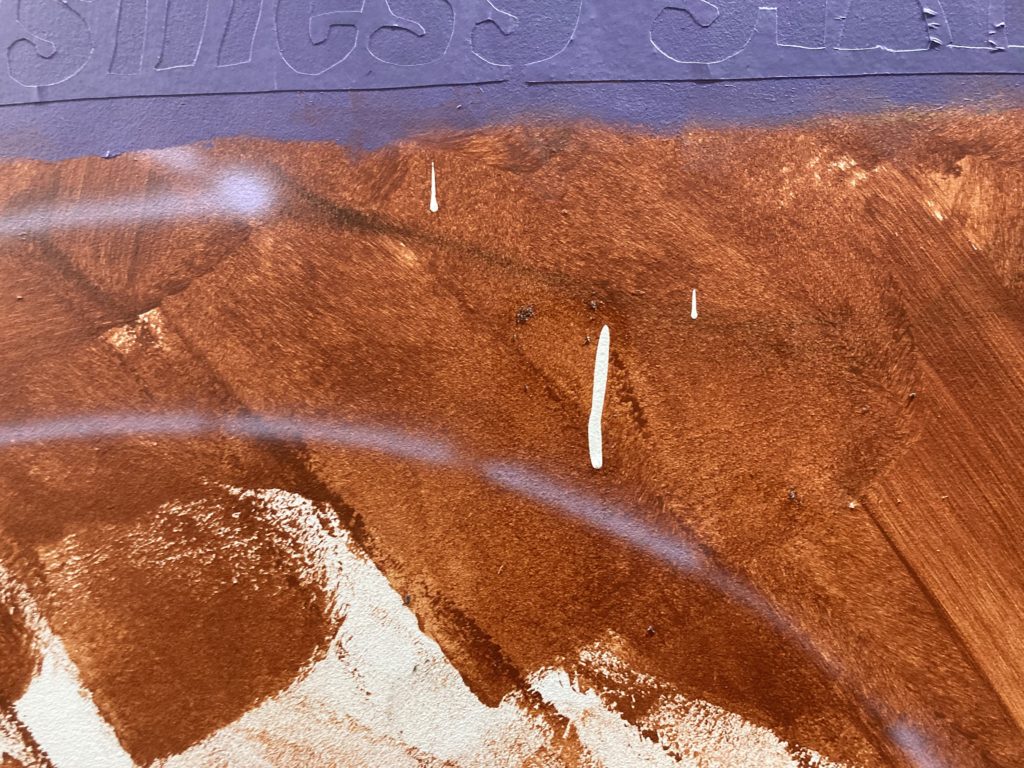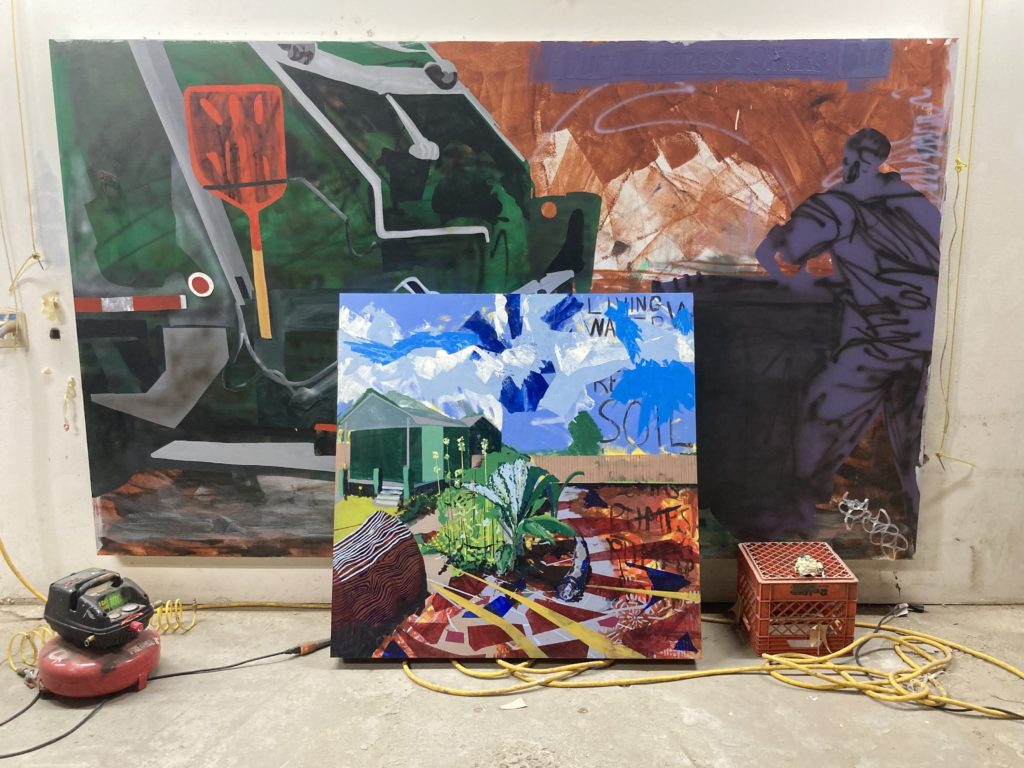
I drove out toward the lake and onto the UNO campus where artist Dan Rule teaches and has his studio. The curb was kind of painted yellow, but not really. I parked anyway, walked across the lawn to the art gallery, and went inside. I sent a message to Dan that I had arrived. We had never met in person, so I compared the couple of faces that passed with the tiny circular image of his Instagram profile. “I’m Dan,” he said and the awkward pandemic moment (mask? handshake?) passed quickly. We left the gallery through a different door and crossed a small, leafy courtyard. One of my New Year’s resolutions is to seek out more studio visits.
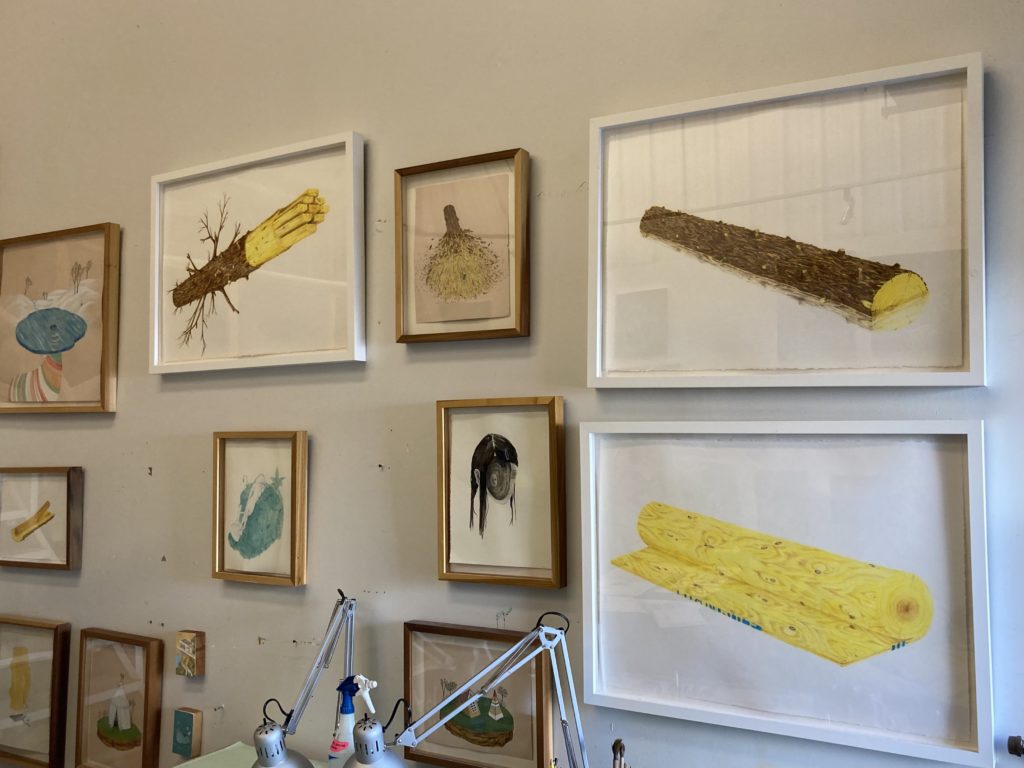
Dan Rule’s studio is full of artwork and is somehow homey. Framed drawings cover one wall, and paintings another. There is a futon and TV monitors, one hung horizontally and the other vertically, with digital animations playing on both. I asked the question I always ask: can I just look around for a few minutes, meaning I like to look at art before I speak or hear about it.
“Sure,” Dan said and stepped out for a few minutes.
When he returned, we spoke about which body of work he was sending to an upcoming show in Las Vegas. I asked what work he was most excited about. I was most excited about the paintings, which I had seen recently in Instagram posts. He took the paintings off the wall where they were stored salon style and set them on an easel. We discussed them one by one. We talked about his work for the next almost two hours.
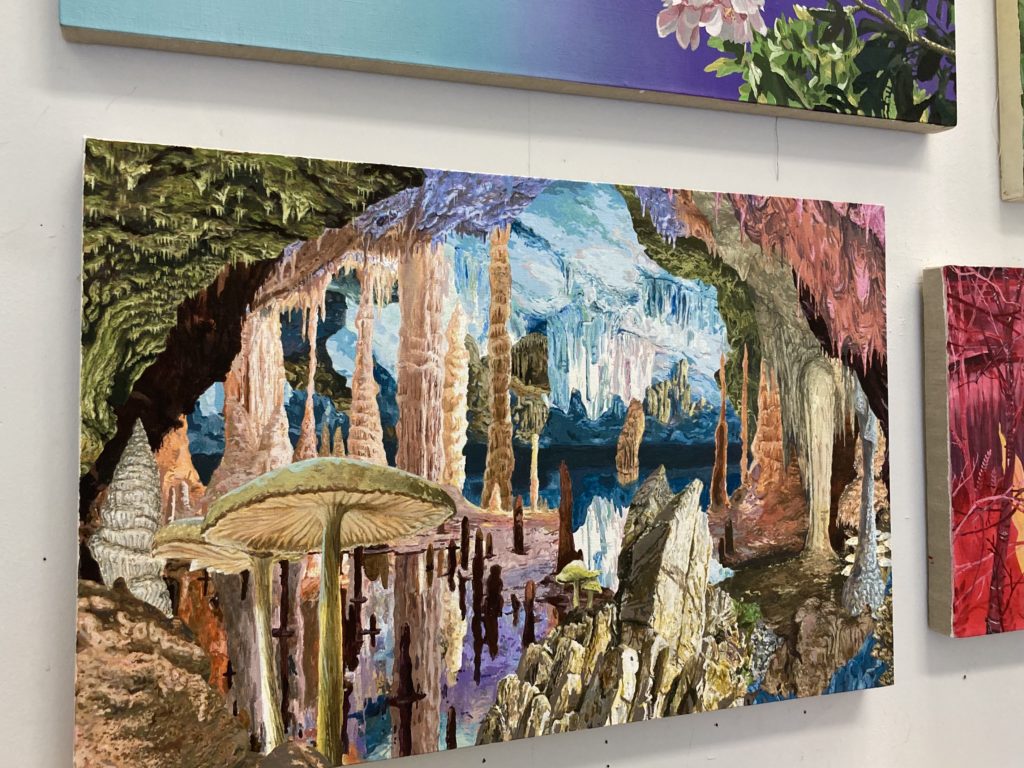
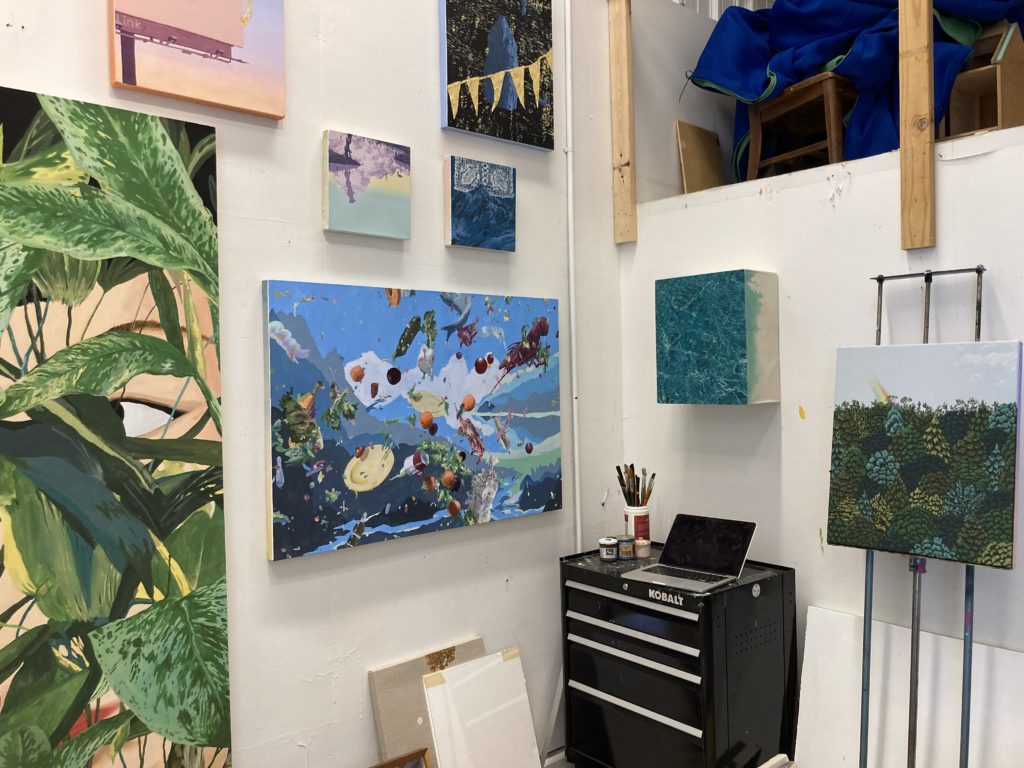
When I called Dan a few weeks later to follow up, he said, “I would be honored if anyone reached out to me and asked for a studio visit.” And he tells his students, “If you see people are doing the thing you want to do, reach out to them.”
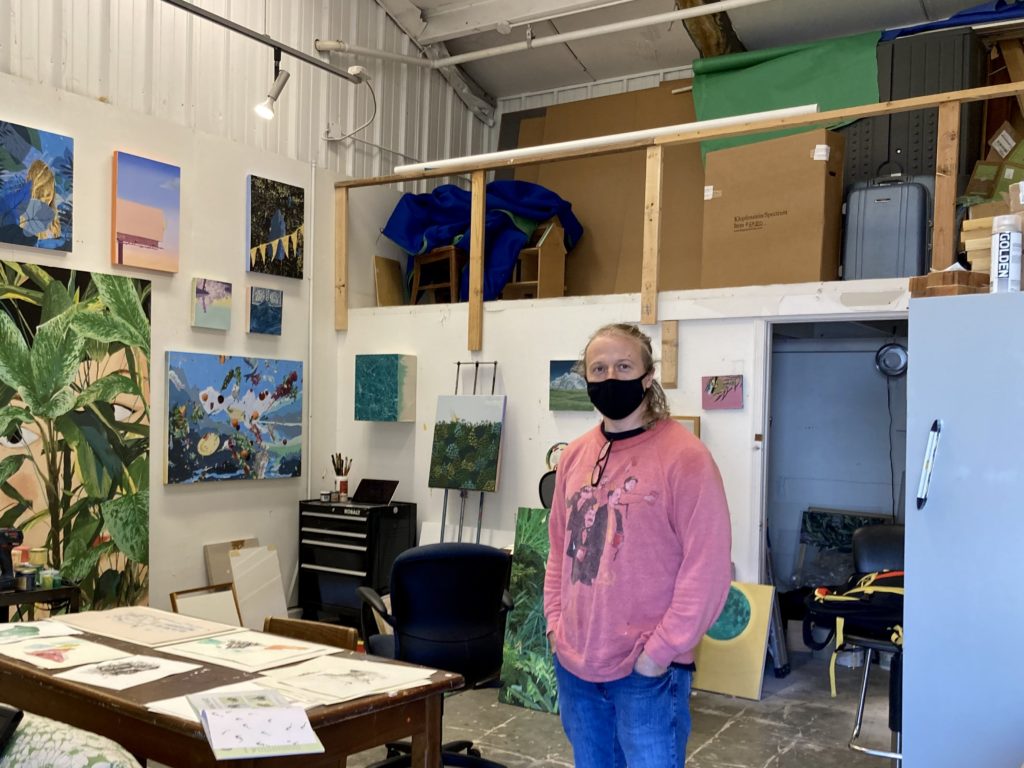
I don’t remember hearing the term “studio visit” before I started my MFA in Painting at Syracuse University many years ago. Prior to graduate school, I drew and painted sitting on the floor of my various apartments. In the summers, I painted in the boathouse of my family’s camp on a lake in the Adirondacks. I had no room to paint in Queens where I slept on an air mattress in a living room corner so I moved to Rochester. There, the landlord said sure, I could use the little room in the basement to paint. I seldom if ever had visitors in these spaces.
Then, I went to graduate school where I had a proper studio and a constant rotation of people coming in and out of it. And I went in and out of other artists’ studios. Every Thursday evening, all eleven Painting grads and one professor would visit two or three studios. While it was exciting to anticipate all that focus and to prepare my studio, I look back on those evenings with mixed feelings. Some of the painting candidates were no longer using paint (Vaseline on a tissue box comes to mind), and carried a pretty active attitude of rejection to the form. At one point I was making monochrome paintings and one fellow student asked, “What if I don’t like blue?”
We also had studio visits from visiting artists. I remember Lawrence Weiner using the word “pussy” but I don’t remember why he used it; my paintings were landscapes and I think they bored him a little. I remember Archie Rand saying “You can paint whatever you want. You can paint a little girl’s birthday party.” That comment, which I took to mean you don’t always have to be serious with paint, stayed with me. The most beneficial studio visits in grad school were one-on-one conversations with a fellow student or professor who came at my invitation.
It wasn’t until I was talking to Dan Rule on the phone that I remembered the word “critique.”
“Oh right!” I said, “Well, as an artist or art writer I don’t really look at art that way.”
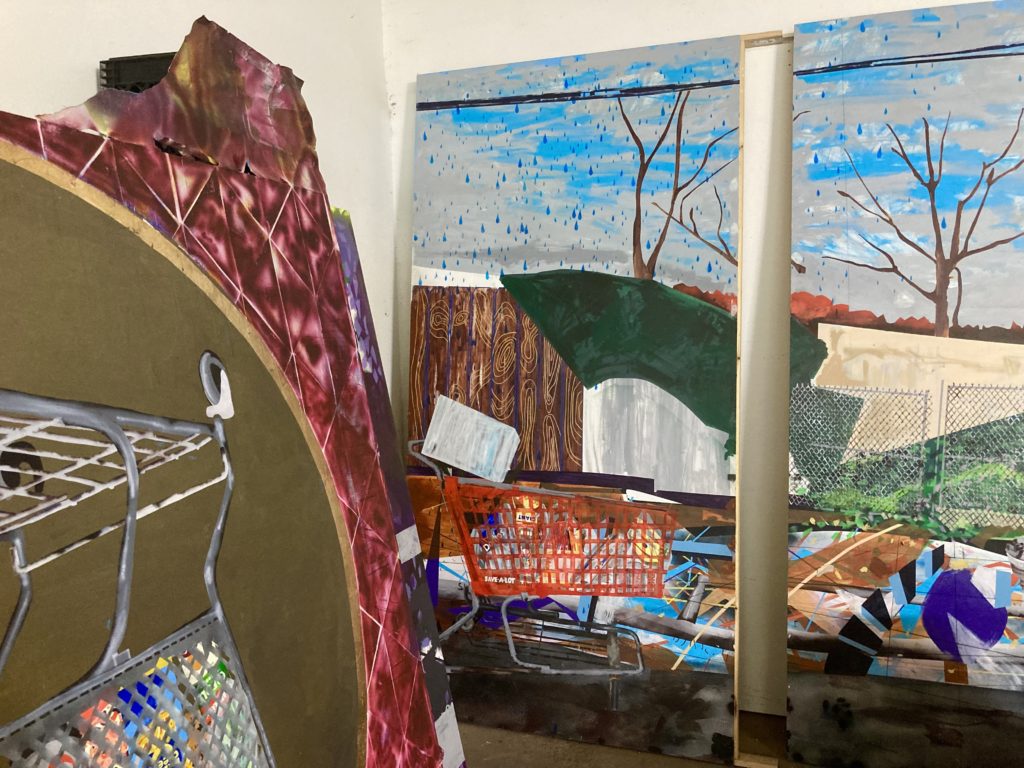
Last week, I drove to Miro Hoffmann’s studio, which is in a warehouse under the Claiborne Bridge. I had seen one of his paintings in a group show at Under Nine, and then I saw his solo show at LeMieux Gallery. This would be the first time we met in person.
The interior of the building was dim and spacious, carved up into studios and workshops. Miro Hoffmann’s studio was big and the paintings I saw at a glance were big. He wandered over to examine an off-white paint drip of paint on the surface of one painting and touched it. (It was dry.) He shrugged and I laughed because the gesture indicated that he didn’t know how it got there but didn’t care either. I said, “Do you mind if I just look around for a minute?” He paused and looked at me like, What else would you do? I laughed. Right.
As I looked at the artist’s paintings, he worked at table in the center of the studio. When I asked questions, he paused for several seconds. He answered some of my questions visually, pulling out rolled-up paintings and unrolling them on the floor, or opening images of paintings on the computer in the middle of the studio. Then he would go back to working at the table.
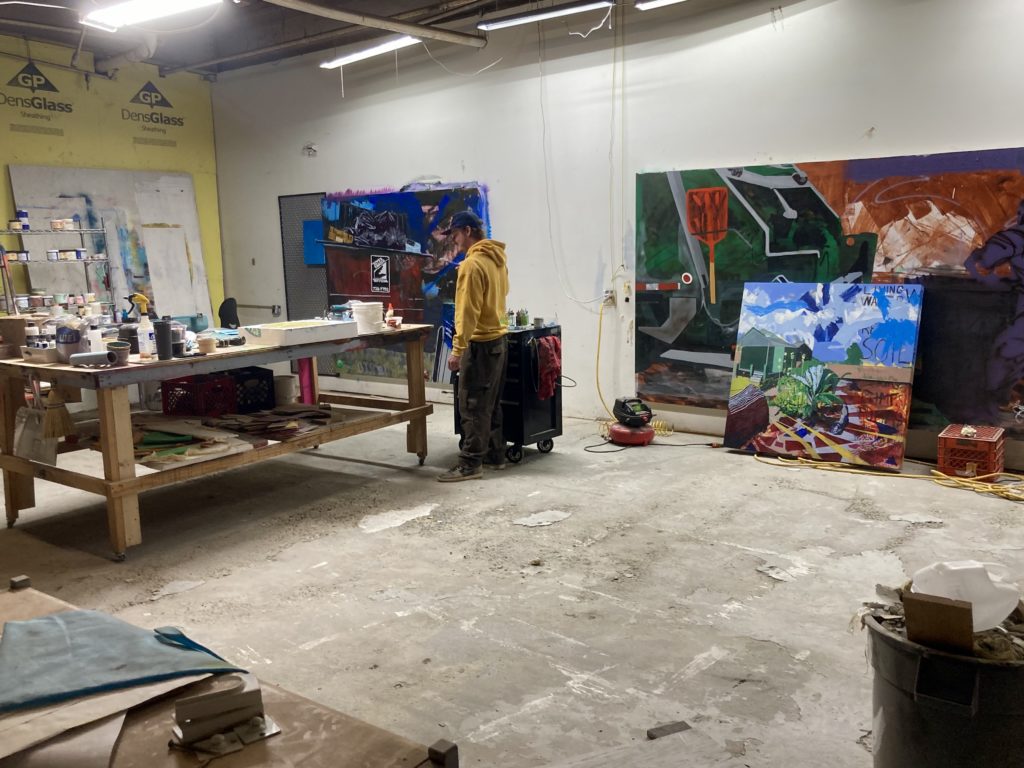
As I looked at the artist’s paintings, he worked on a small painting that lay flat on a table in the center of the studio. When I asked questions, he paused for several seconds He answered some of my questions visually, pulling out rolled-up paintings and unrolling them on the floor, or pulling up images of paintings on the computer in the middle of the studio. Then he would go back to working at the table.
A few days later we spoke by phone. I asked if he had any suggestions or protocol he would like to share with anyone wanting to visit his studio. “…other than don’t touch the work,” I added.
“They can touch the work,” he said.
In the his studio Miro Hoffmann and I had talked about skateboarding, a culture Miro in his early thirties still affiliates with. I myself don’t skate, but I appreciate skateboarding the same way museum-goers who don’t paint appreciate paintings. “What I like about skateboarding,” I told him, “is that, like painting, it’s play, it’s interacting with surfaces in an intuitive way.” Like painting, skateboarding combines a history of gestures with, innovation and individual style. When Miro Hoffmann said that people can touch his paintings, I realized that he treats his paintings, which are of public surfaces––dumpsters, bus stops and community gardens––like public surfaces. A mixture of paint–brushed, rolled-on or sprayed– collage, and stenciling, his work is not treated delicately. It has as much in common with pavement or a POST NO BILLS plywood wall as a fetishized painting surface.
These days, a lot of us have lost our going-out vibes. If you are antsy for a new experience not in your house or on Netflix, how about setting up a studio visit? How does it work? Visitor or artist, you can put it out there in your social circles or on social media that you are interested in visiting or having visitors. Or a gallery can refer you. Museums and art galleries are wonderful places to view art, but studios invite conversation about process and because the work is often still in a gestational phase, you are seeing something special, something not yet out in the world.
